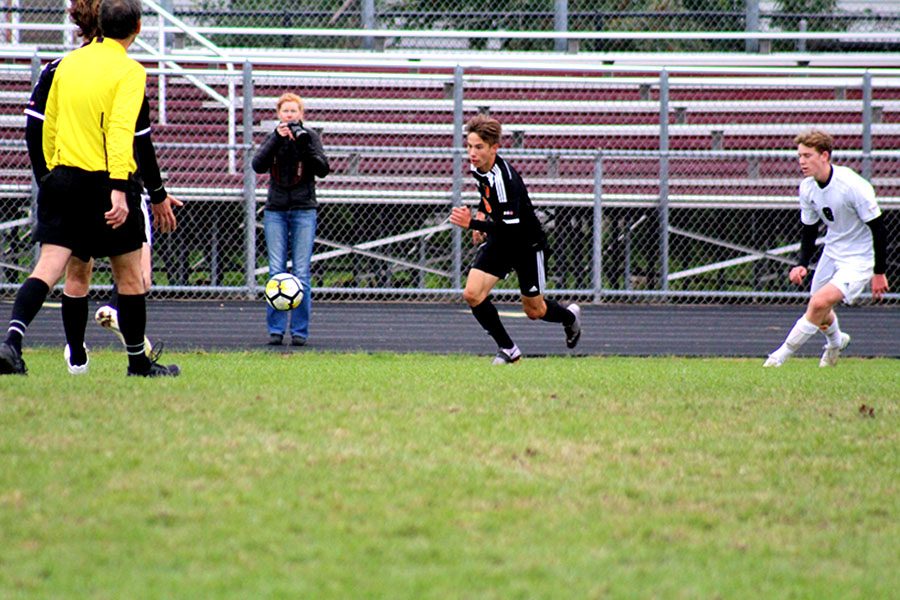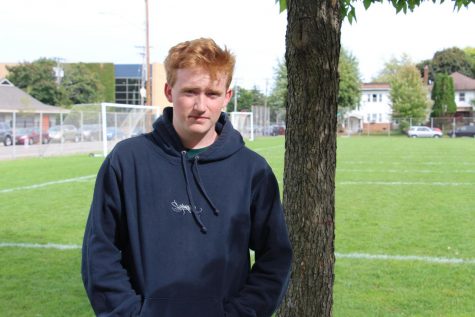South sports in jeopardy after recent budget cuts
November 16, 2018
Over the past 2 years the entire district has been facing harsh budget cuts that have severely affected various school sports in a multitude of ways, “It’s hard to cut from what we had because we have nothing.. Equipment budget, supply budget, coaching budget we still don’t have it” said Amy Cardarelle, Athletics Director for South High School. Although South is in the process of building a new field, the majority of the sports programs here are facing issues such as lack of funding for new uniforms, bus rides and equipment.
Much of this isn’t new, as schools that are located in lower income neighborhoods have a history of having a lack of funding. This is due to a little known policy that assigns unique funding amounts based on property tax values for the neighborhood surrounding the school. Essentially this means that the richer the neighborhood the richer the school which further enhances the education gap between poorer neighborhoods and richer areas.
Schools like South are included in the category of schools that, due to surrounding property value and district budget priorities, have been facing a lack of funding for a number of years before the recent cuts. This means that the recent cuts have further ripped apart the South sports programs, leaving very little wiggle room left for extra supplies.
Recently, the Minneapolis Public School District has been placing a greater focus on cutting sports and other athletic based activities in order to conserve the stretched budget for what the district views as more important academic activities and classes.
Both the coaches and athletes at South share a concern for the well being of the sports programs in our school “We are at the point now where there isn’t much left to cut to have a good program remaining” said Cardarelle.
Some of the less popular but equally appreciated sports at South have been resized and some are being cut, such as Cheerleading. “There are people who want to be on cheer but we don’t have the money… there was a grant written out to possibly have it again,” said Gymnastics coach Gabriele Stickney as she shared her concern for the cutting of cheerleading at South, a sport that, although it had participants, was cut due to prioritization of other programs. However, it’s not only sports that face a lower participation that are currently facing issues. Two of the sports with the highest turn out at South, Soccer and Football, have been facing drastic cutbacks.
The Football team was forced to fire one of the head coaches last year after the first round of cuts while the Soccer teams have had to be creative with how they are getting players to both games and practice. The men’s soccer team must take the city bus and walk as far as Elliot Park and lake Nokomis to attend practice. “We didn’t have a home field all year which put a strain on the budget in order to get transportation… and having super soccer saturday which is the main fundraiser for the program, at Roosevelt drastically cut the amount we brought in” said junior varsity soccer player Aidan Campbell.
Although the issue with transportation to games is incredibly prevalent and effects the number of kids that can participate in various sports programs, this problem is not new to South.
This system is not only unfair to certain schools athletic programs and their athletes but presents the larger problem of institutional racism and bias. Historically wealthier schools like Washburn or Southwest have maintained a predominantly wealthy and white student body, while compared to other schools in less historically wealthy neighborhoods like South, Roosevelt or Edison have represented for the most part the opposite, more diverse demographic.
Sports are important in every school however they represent an even greater meaning and goal in lesser fortunate schools, which tend to share lower graduation statistics. “You can look at all the studies that show all the effects of being an athlete and the life skills it teaches you,” said Cardarelle. Sports give students an incentive for maintaining GPA and minimizing unexcused absences from classes which keeps them on track to graduate on time and with good grades.
Some students like senior Chris Parshall participate in a sport every season in order to maintain their connection and incentive to continue participating in academics and the school community as a whole “you have to have at least a 2.00 gpa to be on a sport team, its motivation… their have been a number of years when Minneapolis public schools have actually won the academic awards for gymnastics, just two years ago we got it here at south,” said Stickney. A somewhat overlooked issue student athletes are facing is as simple as transportation to games. “For basketball this year, we only got one bus so all the teams had to go together… even if you play varsity at 7pm you still have to leave early from school with the JV players in order to make it to the game,” said Parshall.
A number of sports administrators and coaches share a common concern for the future of high school sports in Minneapolis, there seems to be a general feeling of immense uncertainty for the future. “Down the line things that aren’t required to get your highschool diploma could be in jeopardy like: sports, music, all the extra curriculars could be in jeopardy,” said Cardarelle. As more and more sports shrink while maintaining this same need for high funding it may not be possible to continue offering certain sports.
Part of what leads into the possibility of a sport being cut or diminished has more to do with coaches than equipment and transportation “I also coach for Roosevelt and Edison this year, to not have a paid assistant is pretty bad… because of how much we are getting offered from MPLS public schools, gymnastics coach are working with private clubs because they get paid more,” said Stickney. The majority of sports at south all have their own booster clubs as well as various gifts from the Alumni foundation. These gifts and booster clubs provide the majority of funding for sports including general necessities like equipment and practice space. However, the salary and other fees relating to employing of coaches is the major issue that holds certain programs back from being fully funded “they end up doing a lot of fundraising to pay for extra things, I end up doing a lot of grant writing to pay for things” said Stickney. This means that beside the bare necessities each program is left to its own devices to compile anything beyond the basics the district provides.







